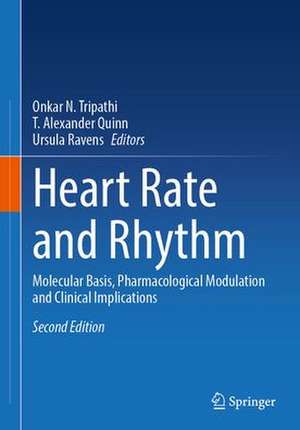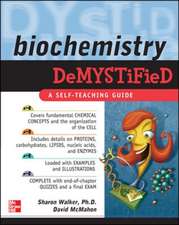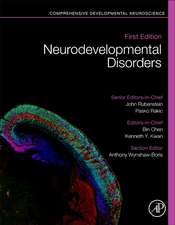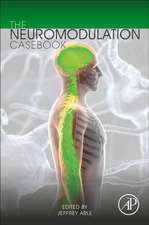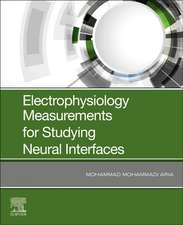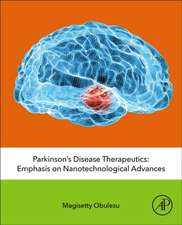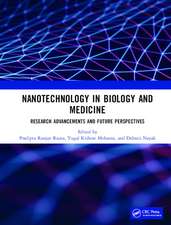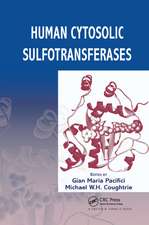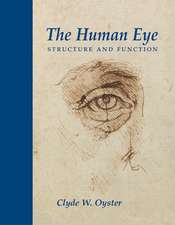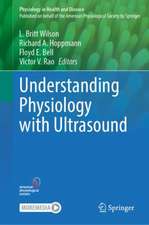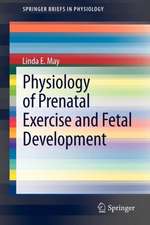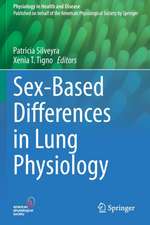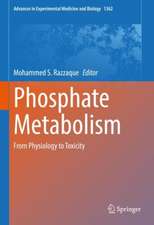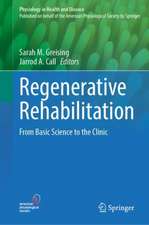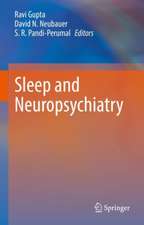Heart Rate and Rhythm: Molecular Basis, Pharmacological Modulation and Clinical Implications
Editat de Onkar N. Tripathi, T. Alexander Quinn, Ursula Ravensen Limba Engleză Hardback – 8 dec 2023
The respective chapters cover a broad range of topics, including the role of specific ion channels and transporters, gap junctions, intracellular Ca2+ handling in pacemaker activity, impulse conduction, and the activity of atrial and ventricular myocardium. Special emphasis is placed on the unique electrophysiology of specialized pacemaking cells and conducting fibers. In turn, several types of inherited and acquired ventricular arrhythmias are presented in detail. Clinicians will especially appreciate the updated information on even common disorders like atrial fibrillation and their impacts on human physiology.
In closing, the book goes “one step further” and considers future prospects, e.g. novel antiarrhythmic agents and new concepts like optogenetics, in the context of heart rate regulation. Accordingly, it offers readers a solid reference guide to everything they need to know about human heart rate and rhythm.
Preț: 1822.03 lei
Preț vechi: 1917.93 lei
-5% Nou
Puncte Express: 2733
Preț estimativ în valută:
348.68€ • 361.82$ • 291.44£
348.68€ • 361.82$ • 291.44£
Carte tipărită la comandă
Livrare economică 15-29 martie
Preluare comenzi: 021 569.72.76
Specificații
ISBN-13: 9783031335877
ISBN-10: 3031335872
Ilustrații: XVIII, 584 p. 126 illus., 80 illus. in color.
Dimensiuni: 178 x 254 mm
Greutate: 1.26 kg
Ediția:2nd ed. 2023
Editura: Springer International Publishing
Colecția Springer
Locul publicării:Cham, Switzerland
ISBN-10: 3031335872
Ilustrații: XVIII, 584 p. 126 illus., 80 illus. in color.
Dimensiuni: 178 x 254 mm
Greutate: 1.26 kg
Ediția:2nd ed. 2023
Editura: Springer International Publishing
Colecția Springer
Locul publicării:Cham, Switzerland
Cuprins
Part I. Normal Cardiac Rhythm and Pacemaker Activity.- Chapter 1. Cardiac Ion Channels and Heart Rate and Rhythm.- Chapter 2. A Historical Perspective on the Development of Models of Rhythm in the Heart.- Chapter 3. Ionic Basis of the Pacemaker Activity of SA Node Cell Revealed by the Lead Potential Analysis.- Chapter 4. The “Funny” Pacemaker Current.- Chapter 5. Cardiac Pacemaking is an Emergent Property of Complex Synchronized Signaling on Multiple Scales.- Chapter 6. Unique Features of the Human Sinoatrial Node Structure, Function and Arrhythmias: Mechanistic Insights from Integrated 3D Mapping Approaches.- Chapter 7. Mechano-Electric Coupling in the Heart: Effects on Heart Rate and Rhythm.- Part II. Neurocardiac Axis and Arrhythmias.- Chapter 8. Fundamental Neurocardiology: The Intracardiac Nervous System.- Chapter 9. The Neuro-cardiac Axis in Arrhythmogenesis: Role and Impact of Autonomic Modulation.- Part III. Role of Specific Channels and Subcellular Structures in Arrhythmia.- Chapter 10. L-type Ca2+ Channels and Cardiac Arrhythmias.- Chapter 11. Kv11.1 (hERG1) Channels and Cardiac Arrhythmia.- Chapter 12. TRP Channels in Cardiac Arrhythmia: Their Role During Purinergic Activation Induced by Ischemia.- Chapter 13. Role of NCX1 and NHE1 in Ventricular Arrhythmia.- Chapter 14. Gap Junctions and Cardiac Impulse Propagation. New Aspects of Arrhythmogenesis and Antiarrhythmic Agents T.- Chapter 15. Role of the T-Tubules in the Control of Cellular Calcium and Inotropic Interventions in Cardiac Ventricular Myocytes.- Chapter 16. Structure of Transverse (T)-tubules in Health and Disease.- Chapter 17. Enlightening Cardiac Arrhythmia with Optogenetics.- Part IV. Mechanisms of Acquired Arrhythmia.- Chapter 18. An Overview of Spiral- and Scroll-Wave Dynamics In Mathematical Models for Cardiac Tissue.- Chapter 19. The Role of Intracellular Ca2+ in Arrhythmias in the Postmyocardial Infarction Heart.- Chapter 20. Characteristics of Intracellular Ca2+ Handling Proteins in Heart Function in Health and Disease.- Chapter 21. Implications of Sarcolemmal Ca2+-handling Proteins in Heart Function in Health and Disease.- Chapter 22. Calmodulin Kinase II Regulation of Heart Rhythm and Disease.- Chapter 23. Pathways in Human Arrhythmias: Impact of Post-Translational Modifications.- Chapter 24. Viral Myocarditis.- Chapter 25. Epigenetic Influences of Air Pollution-Induced Cardiac Arrhythmias.- Part V. Mechanisms of Inherited Arrhythmia.- Chapter 26. The Short QT Syndrome.- Chapter 27. Defects in Ankyrin-Based Protein Targeting Pathways in Human Arrhythmia.- Part VI. Novel Antiarrhythmic Approaches.- Chapter 28. Ion Channels as New Drug Targets in Atrial Fibrillation.- Chapter 29. K Channel Openers as New Antiarrhythmic Agents.
Notă biografică
Dr. Onkar N. Tripathi received his PhD degree in Pharmacology from King George's Medical University, Lucknow, India. From 1973-1975 he was an Alexander-von-Humboldt Research Fellow in Germany working in the electrophysiology laboratories of Wolfgang Trautwein (Homburg, Saar) and Albrecht Fleckenstein (Freiburg im Breisgau). His research interests are autonomic neural regulation of heart, cardiac cellular electrophysiology and ion channels. Until his retirement, he chaired the Cardiac Electrophysiology Division at the Central Drug Research Institute in Lucknow. Dr. Ursula Ravens received her MD from Albert-Ludwigs-University, Freiburg. After an internship in Berlin, she specialized in Pharmacology at University of Kiel. In 1985, she obtained a tenured position as Professor of Cardiovascular Pharmacology at the Medical Faculty of Essen University. In 1994 she did a sabbatical at the National Heart & Lung Institute of Imperial College London. She was appointed to thechair of Pharmacology and Toxicology at the Medical Faculty of TU Dresden in 1997 from which she retired in 2014. Since 2016 she holds a position as senior guest professor at Institute of Experimental Cardiovascular Medicine of University Clinics Freiburg. Her research focuses on cardiac cellular electrophysiology with emphasis on antiarrhythmic drug action on ion channels and stretch-activated channels of human cardiac cells in health and disease, especially atrial fibrillation.
Dr. T. Alexander Quinn received his BSc in Physiology & Physics from McGill University and his PhD in Biomedical Engineering from Columbia University in New York. He did his postdoctoral training in the Depts of Physiology, Anatomy & Genetics and Computer Science at the University of Oxford, where he was a Fulford Junior Research Fellow in Medical Sciences at Somerville College, followed by time at the National Heart & Lung Institute of Imperial College London. He was recruited to the Dept of Physiology & Biophysics at Dalhousie University, in 2013, where he is the Director of the Cardiac Autoregulation & Arrhythmias Laboratory, with a cross-appointment in the School of Biomedical Engineering. His research focuses on the regulation of cardiac electrical activity by processes that reside within the heart itself, and the role that these auto-regulatory mechanisms play in deadly arrhythmias that occur in disease and with ageing.
Dr. T. Alexander Quinn received his BSc in Physiology & Physics from McGill University and his PhD in Biomedical Engineering from Columbia University in New York. He did his postdoctoral training in the Depts of Physiology, Anatomy & Genetics and Computer Science at the University of Oxford, where he was a Fulford Junior Research Fellow in Medical Sciences at Somerville College, followed by time at the National Heart & Lung Institute of Imperial College London. He was recruited to the Dept of Physiology & Biophysics at Dalhousie University, in 2013, where he is the Director of the Cardiac Autoregulation & Arrhythmias Laboratory, with a cross-appointment in the School of Biomedical Engineering. His research focuses on the regulation of cardiac electrical activity by processes that reside within the heart itself, and the role that these auto-regulatory mechanisms play in deadly arrhythmias that occur in disease and with ageing.
Textul de pe ultima copertă
This completely updated and expanded 2nd Edition provides all the information needed in order to understand the complex molecular, cellular and genetic mechanisms that underlie normal and abnormal cardiac rhythms. Its goal is to help physiologists and clinicians alike develop better preventive and treatment strategies.
The respective chapters cover a broad range of topics, including the role of specific ion channels and transporters, gap junctions, intracellular Ca2+ handling in pacemaker activity, impulse conduction, and the activity of atrial and ventricular myocardium. Special emphasis is placed on the unique electrophysiology of specialized pacemaking cells and conducting fibers. In turn, several types of inherited and acquired ventricular arrhythmias are presented in detail. Clinicians will especially appreciate the updated information on even common disorders like atrial fibrillation and their impacts on human physiology.
In closing, the book goes “one step further” and considers future prospects, e.g. novel antiarrhythmic agents and new concepts like optogenetics, in the context of heart rate regulation. Accordingly, it offers readers a solid reference guide to everything they need to know about human heart rate and rhythm.
In closing, the book goes “one step further” and considers future prospects, e.g. novel antiarrhythmic agents and new concepts like optogenetics, in the context of heart rate regulation. Accordingly, it offers readers a solid reference guide to everything they need to know about human heart rate and rhythm.
Caracteristici
Examines molecular and cellular mechanisms underlying normal and pathological cardiac rhythm Explores optogenetics in relation to arrhythmia and its treatment Broadens understanding of neurocardiology and arrhythmias
